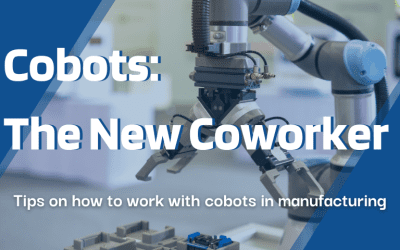This year, America reached a record number of job openings with 5.78 million open jobs, according to the Labor Department. Such a great availability of jobs is both good and bad. On one hand, it means that employers across the U.S are hiring! On the other hand, it means that employers are having difficulty finding the right people to fill their jobs.
This persistent problem in America’s economy is known as the skills gap and has highlighted a struggle for both employers and employees alike. Employers struggle with the skills gap, because they reach a point at which the company can no longer continue to grow due to not having the proper skill set to drive results. Job applicants struggle with the skills gap, because they lack the training or experience to access available jobs.
As an applicant in today’s job market you may be wondering, “How can I ensure that I do not fall victim to the skills gap?” While there may not be one definitive answer to this question, and much of the solution may lie with employers, there are steps that you can take to make yourself more desirable to employers. Check out these three tips to help bridge the skills gap!
Ditch the Tenure Mentality
According to the Bureau of Labor Statistics, Millennials make up about 34% of the U.S. workforce, outnumbering Gen Xers at 32% and Baby Boomers at 31%. While some employers may complain that Millennials won’t stay put in a job for long, others see the value in their perceived entrepreneurial mindset. In today’s workforce, career growth is largely based on personal ambition. The median job tenure for workers age 20-24 is 1.5 years or less. This Millennial group is ever changing, flexible, adaptable, and open to acquiring new skill sets, making them a jack-of-all-trades. These characteristics fair well in today’s ever changing job market and make you desirable to employers seeking individuals that take a proactive step to keep up with the changes.
Embrace the Benefits of Vocational School
Experts estimate that mid-skill labor training, which is a focus in most vocational programs, will comprise 47% of all job openings by 2020. Vocational schools, also known as trade schools, place emphasis on practical as opposed to academic education. This is a popular option for individuals who want to fast-track into well paying, highly skilled careers. With over 300 vocational schools in the U.S. to choose from and a number of Federal and private student loans to help finance, there is no reason not to start advancing your education and training. To stay competitive in today’s job market, it is imperative to continuously learn new skill sets.
Make Yourself Attractive to Prospective Employers
Be prepared to market yourself! Make sure to polish up your resume, improve upon your cover letter, and update your social media profiles. You never know when a new job opportunity may present itself. You want to make sure that you are always presenting a version of your ‘best self’ to a potential employer. Take a look at the skills required for the position you desire and self-assess. If you do not already have the necessary skill set, look for opportunities to acquire them. Skills are acquired by practice. Seek out free resources, volunteer opportunities, or on-the-job training that will help you grow and develop. A job applicant willing to develop these new skills will not fall victim to the skills gap.
Do not let the employer’s perceived dissension between the skilled talent they need and the skills possessed by the available workforce discourage you. The skills gap is not as wide as you may think! There will always be a bridge for those open to change, filled with ambition and a willingness to learn new skills. Check out some of the internships and trainee programs offered through MAU as we work to help bridge the skills gap as employers!
{{cta(‘727f7c93-50f3-412c-ac20-c9122bb13854’)}}




-400x250.png)